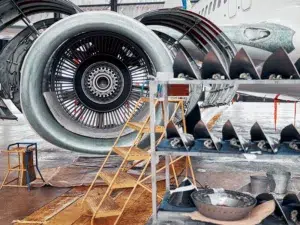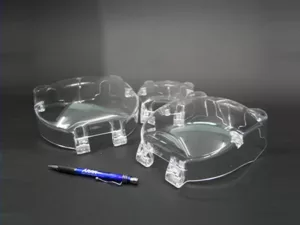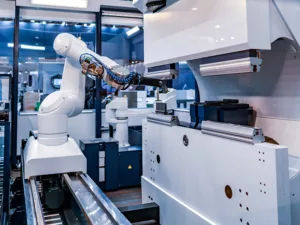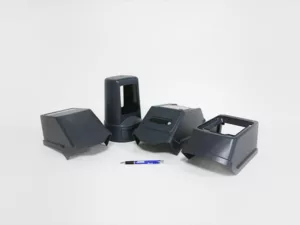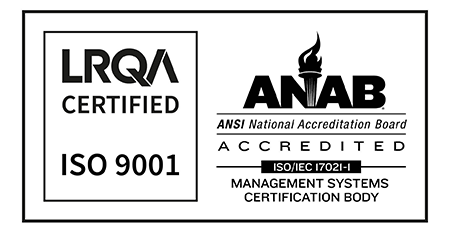In the fast-paced world of manufacturing, companies face the challenge of delivering high-quality products efficiently and cost-effectively. Two commonly employed production methods are batch production vs mass production. Each method has its merits and is suitable for different scenarios.
ARRK North America is an international company with years of experience providing our clients with the highest quality manufacturing services. In this article, we will explore the differences between batch production and mass production, with a focus on how Urethane Casting (also known as Vacuum Casting), offered by our manufacturing company, can enhance Low-Volume Production.
Batch Production:
Batch production refers to a manufacturing approach where a specific quantity of products is produced at a given time. This method is often employed when there is a need for a limited number of products or when customization is required. In batch production, the manufacturing process is divided into different stages, and each stage is performed on multiple products simultaneously before moving on to the next stage.
This type of production is ideal for clients whose product is still in the prototyping or testing stage since changes and improvements can be made easily and quickly at a lower cost.
Advantages of Batch Production
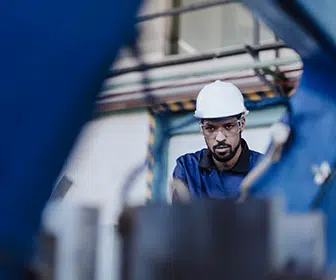
- Flexibility: Batch production allows manufacturers to adapt quickly to changing customer demands or market trends. Since components are produced in small batches, it is easier to make modifications and adjustments, accommodating customization requests or design iterations.
- Cost-Effectiveness: In comparison to mass production, batch production is generally more cost-effective for low-volume production. The lower initial setup costs and reduced raw material requirements make it an attractive option, especially when producing a limited quantity of products.
- Quality Control: With batch production, it becomes easier to identify and rectify any flaws or issues early in the process. By focusing on a smaller number of products, manufacturers can implement stringent quality control measures, ensuring higher levels of precision and quality in the final products.
Vacuum Casting and Low-Volume Production
One of the services offered by our manufacturing company is Vacuum Casting, which aligns perfectly with the concept of low-volume manufacturing. Vacuum Casting is a Rapid Prototyping technique used to produce small batches of high-quality, functional parts. By utilizing silicone molds and polyurethane resins, Vacuum Casting offers numerous benefits for low-volume production scenarios:
- Speed and Efficiency: Vacuum Casting enables the rapid production of parts, with significantly shorter lead times compared to traditional manufacturing methods. The process involves creating a master pattern, producing a silicone mold, and casting multiple replicas in the desired material. This efficient workflow allows for quick turnaround times, essential for meeting tight project deadlines.
- Cost-Effective Prototyping: For product development and prototyping stages, Vacuum Casting proves invaluable. It allows designers and engineers to evaluate form, fit, and functionality before committing to mass production. With the ability to produce small batches economically, manufacturers can gather valuable feedback and make necessary design iterations without incurring significant costs.
- Customization: Vacuum Casting enables the production of highly customized parts with intricate details and surface finishes. This process accommodates specific design requirements and facilitates the creation of visually appealing prototypes or end-use products. By offering a range of materials and finishes, our manufacturing company can cater to a variety of low-volume production needs.
Mass Production
Mass production, on the other hand, involves the production of goods on a large scale, typically characterized by continuous and standardized processes. This method is employed when there is a consistent demand for a product and economies of scale can be achieved. Mass production often utilizes automated machinery and assembly lines to streamline the manufacturing process.
Advantages of Mass Production
- Cost Efficiency: Mass production thrives on economies of scale, as the cost per unit decreases with higher production volumes. The efficiency gained through automated processes and standardized components helps reduce labor costs, making it an economically viable option for products with a substantial market demand.
- Consistency and Reproducibility: With standardized processes and strict quality control measures, mass production ensures consistent quality across all units. This uniformity is crucial when manufacturing products that require precise specifications and performance standards.
- High Production Output: Mass production techniques are designed to achieve high production volumes efficiently. By employing automated machinery and assembly lines, manufacturers can significantly increase their production output, meeting large-scale demand within shorter timeframes.
When choosing between batch production vs mass production, manufacturers need to consider various factors such as production volume, customization requirements, and cost-effectiveness. Our team will be glad to help you choose the right fit for you.
With ARRK’s expertise in Vacuum Casting and a range of other services like custom 3D Printing, rapid prototyping, tooling, and injection molding, we are committed to providing high-quality solutions tailored to our clients’ unique needs in the world of manufacturing.

